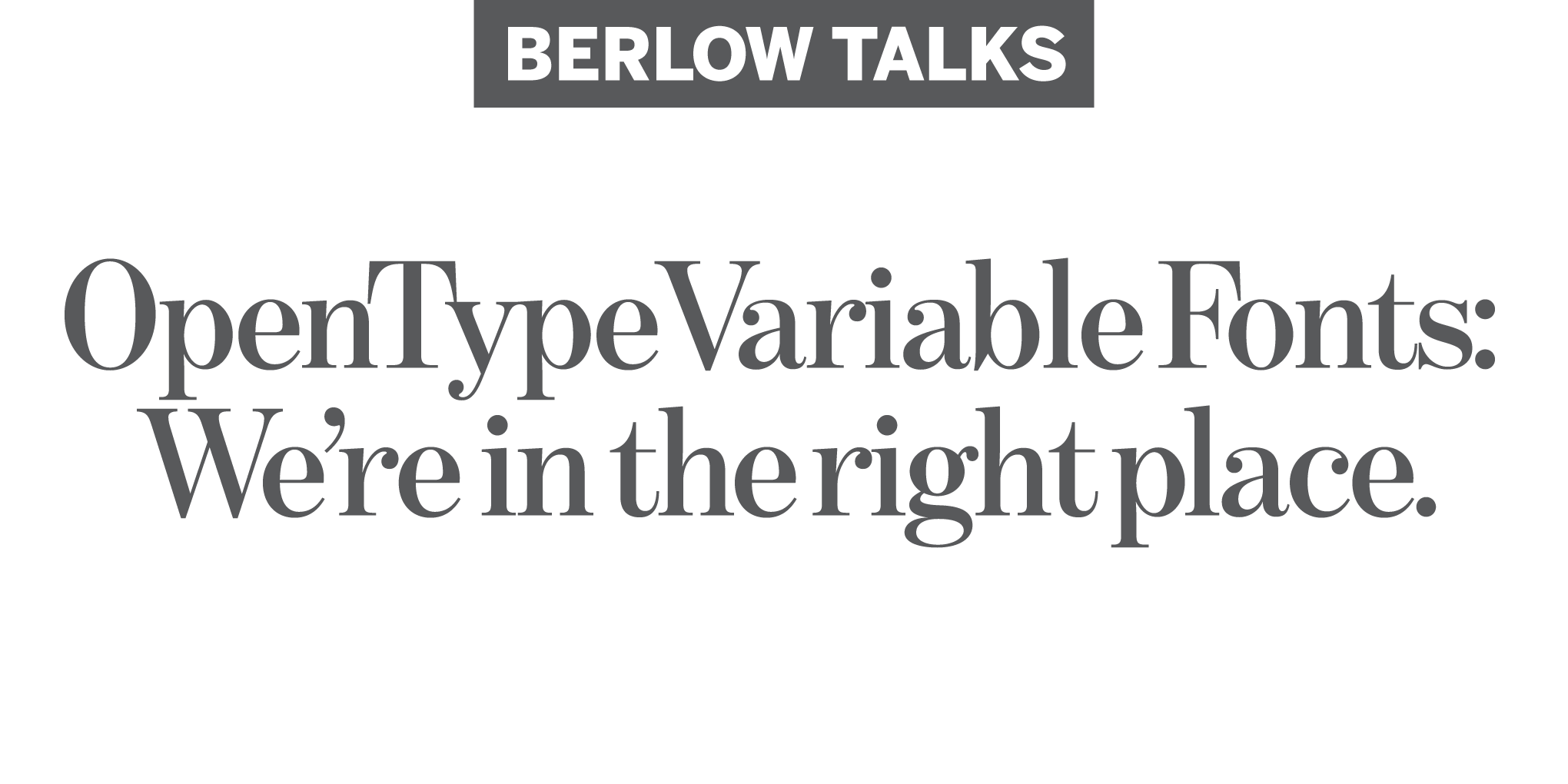Font Bureau founder David Berlow, a pioneer from the early days of digital type, thinks we’re finally ready to embrace the power of variations.
By David Berlow
I‘m really very happy to see the public display of support for font variations by so many major developers, and such a great public display of interest from so many font developers. Partial full disclosure—the morning after the announcement had been made last week at ATypI 2016 in Warsaw, I woke up with Handel‘s “Variations Chorus” playing in my head, knowing that these announcements had been made while I slept.
As a frontier GX Variations developer, and as a type designer working with the technology for the last 20 years—along with many others developing font families today at Type Network and Font Bureau—I know that variations font products hold an important place in the type world. When variations were first released, that place was not ready with the resolution, bandwidth, processing, type designers, or application developers essential to longterm success.
The place we are today, which made variations happen, came about because Adobe, Apple, Microsoft, and Google quite reasonably found themselves needing to more efficiently deliver fonts for scripts like Chinese, Japanese, and Korean. CJK, comprising all of these scripts, has a much more efficient container in OpenType font variations than the 4, 8, or 10 huge font files needed for the different weights of CJK fonts alone. Most of these also contain all the Western glyphs as well.
Before anybody starts worrying that the future of variations technology will be limited to a narrow but important problem, remember that OpenType‘s ability to do glyph substitution was first broadly implemented for international script support. That eventually led to a great flowering. Type design and the use of OpenType glyph substitution for the wide varieties of design styles and scripts were not previously possible without custom programming developed to automate the search for and replacement of glyphs.
I greatly look forward to another slow flowering—not just for more immediate, faster document presentation of CKJ—but also:
• for the simplification of document design
• for the development of animated content and its challenge to variation use
• in the intersection of layered and colored fonts with variations
• and, of course, where the intersection of variations and world scripts brings new design possibilities.
While the settling of every frontier doesn’t necessarily bring new frontiers, my greatest excitement for variations are the many new frontiers they open up.
